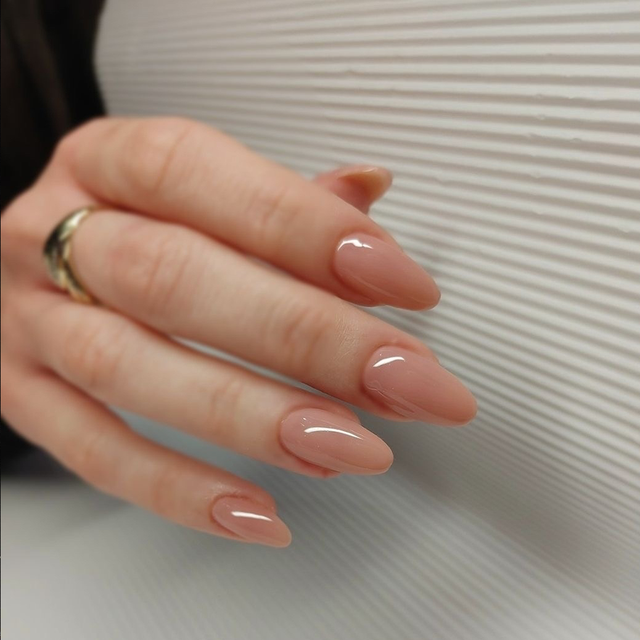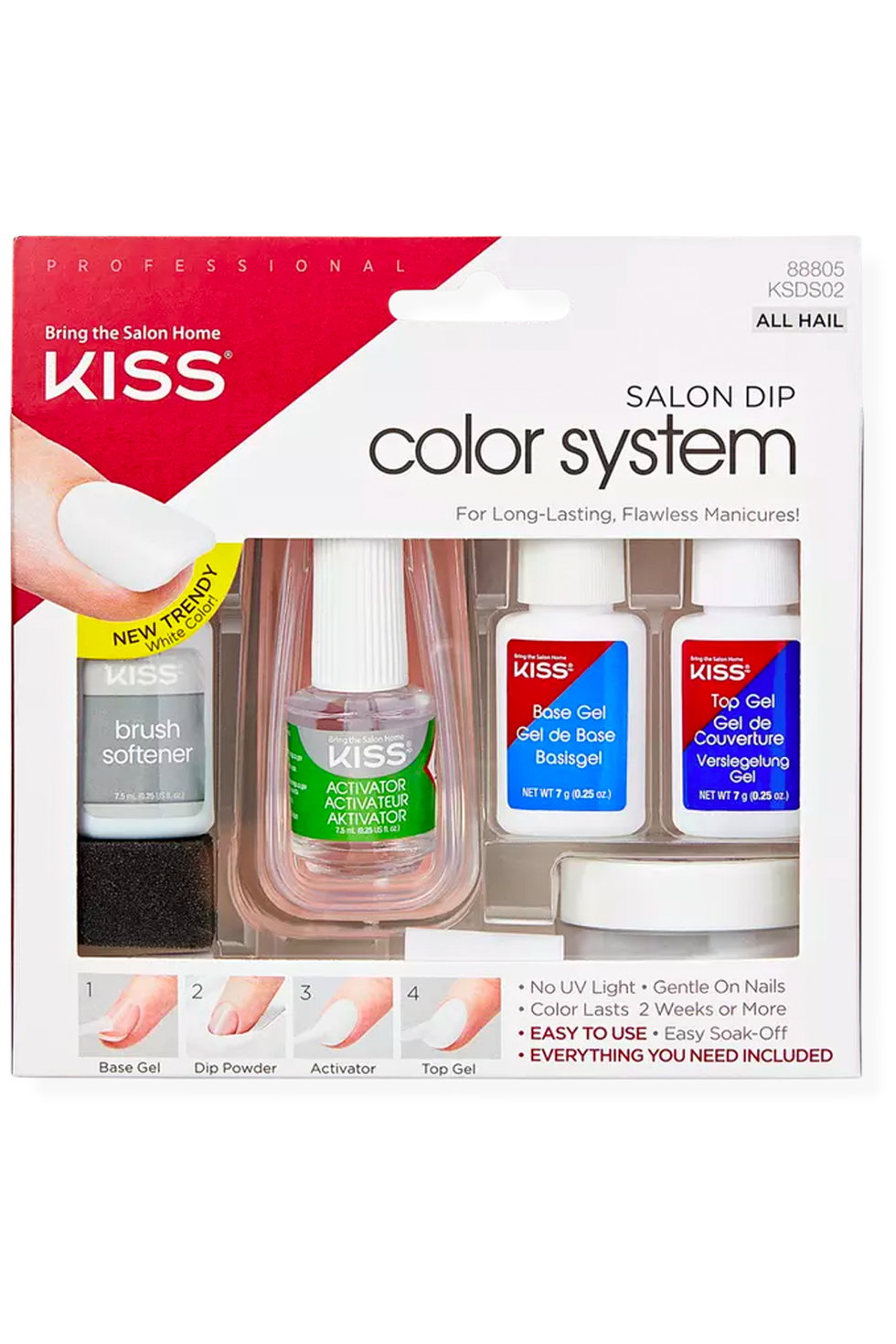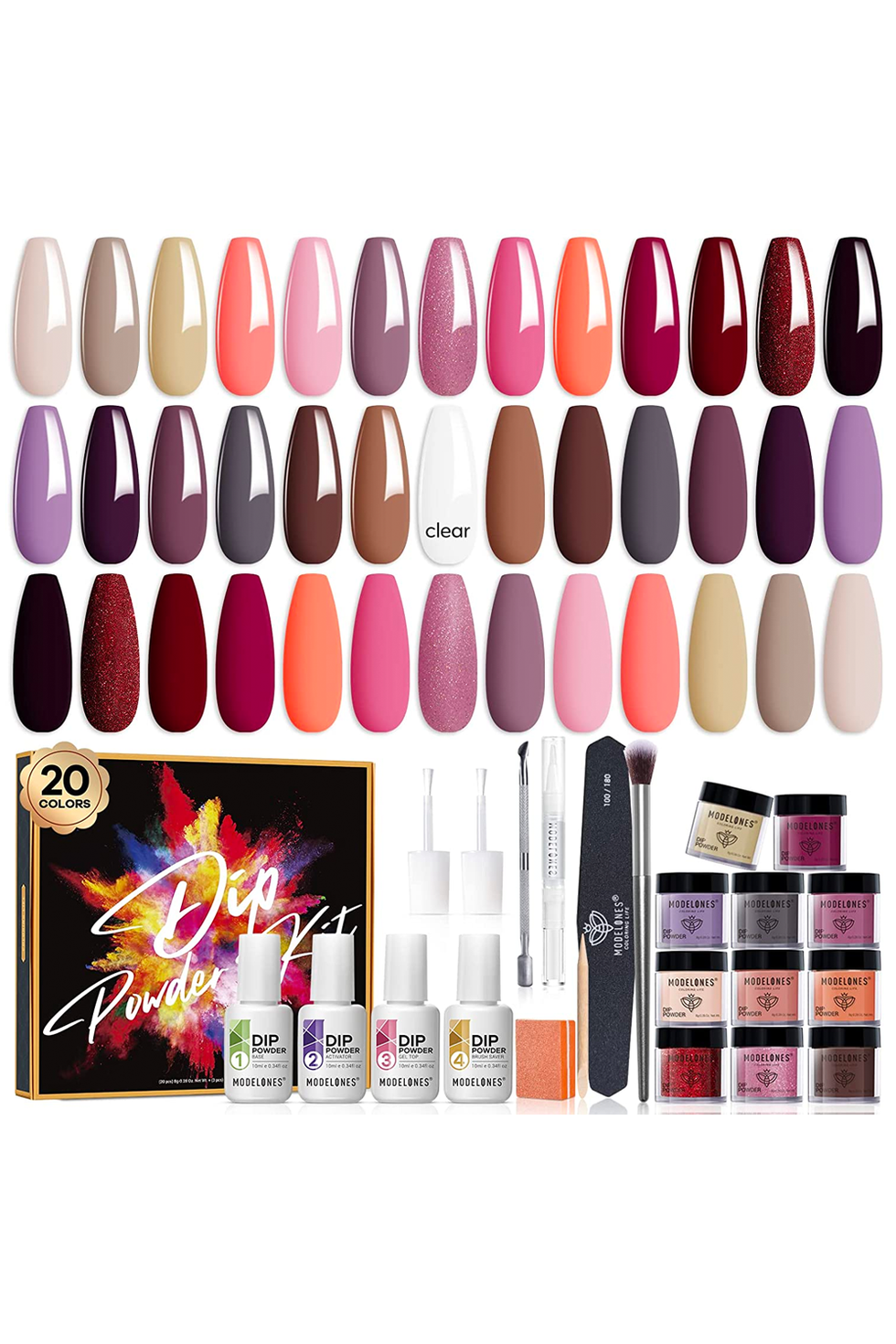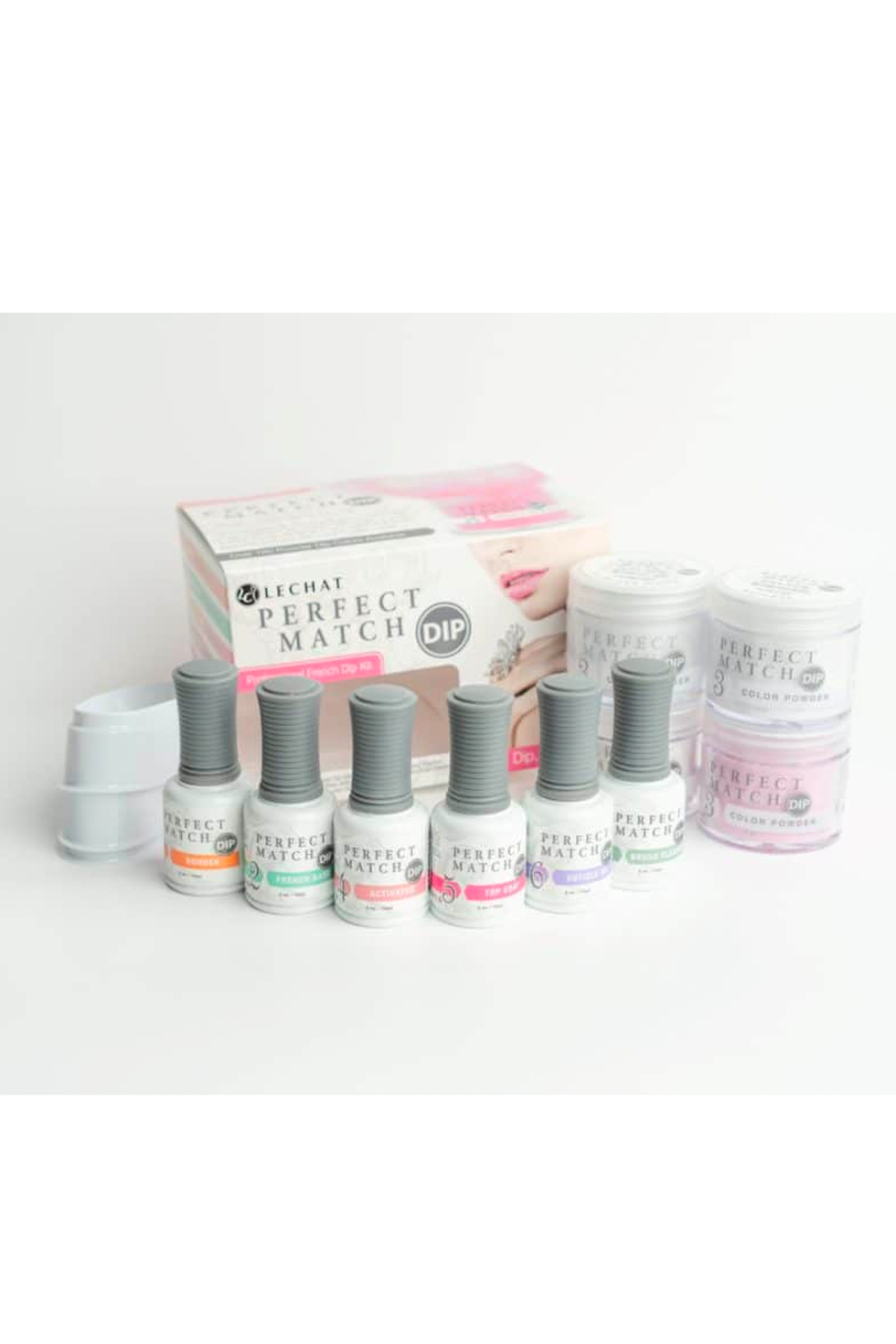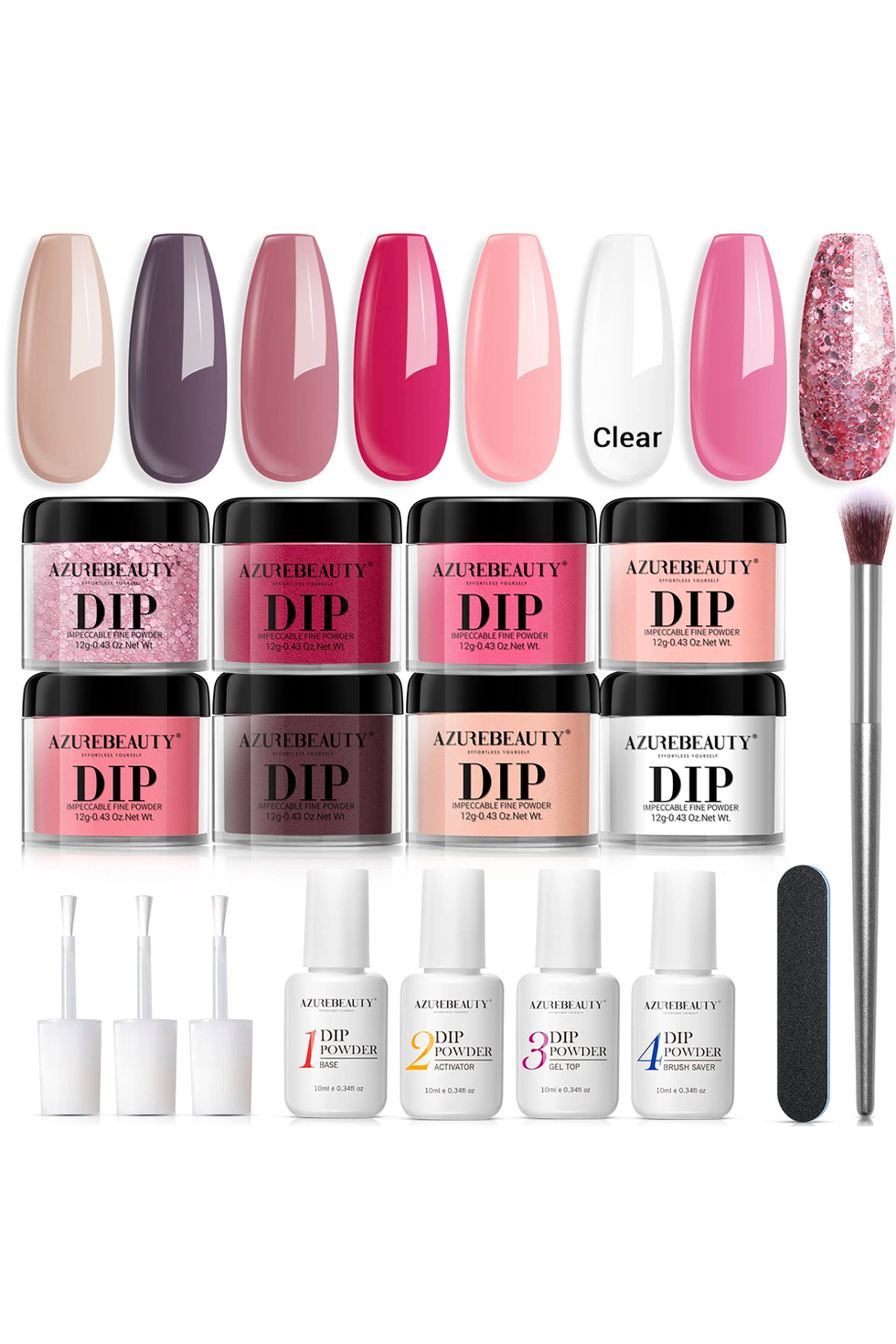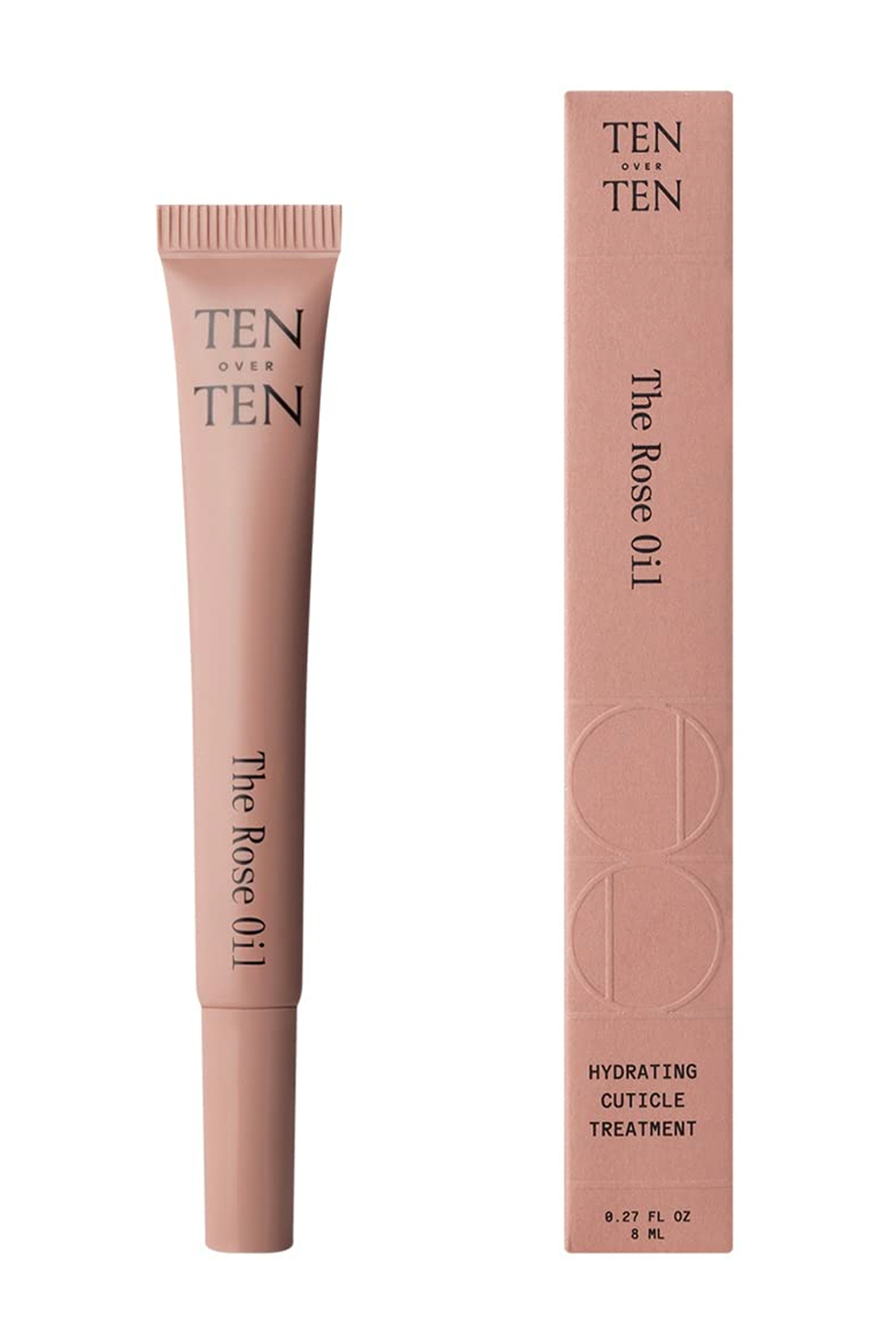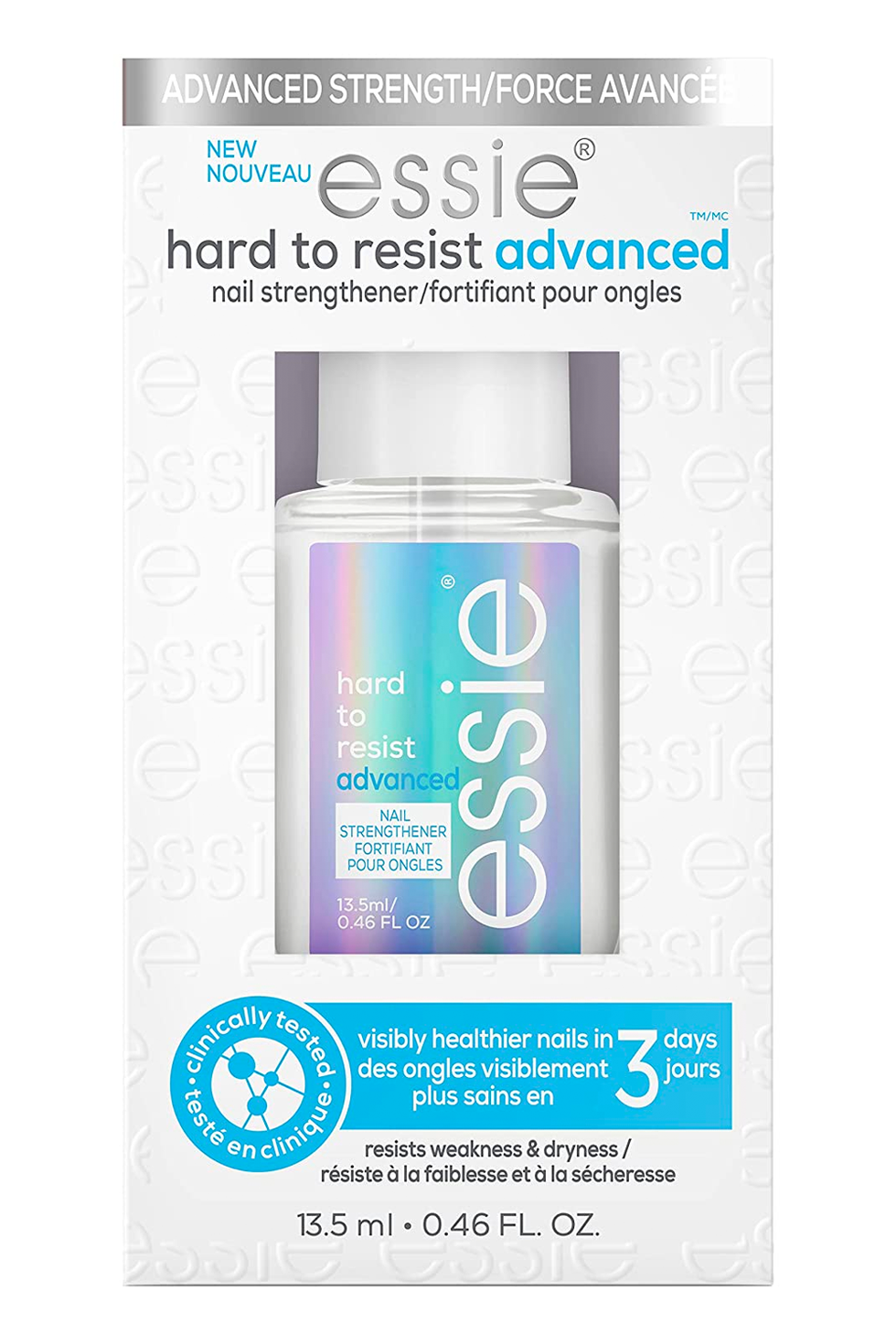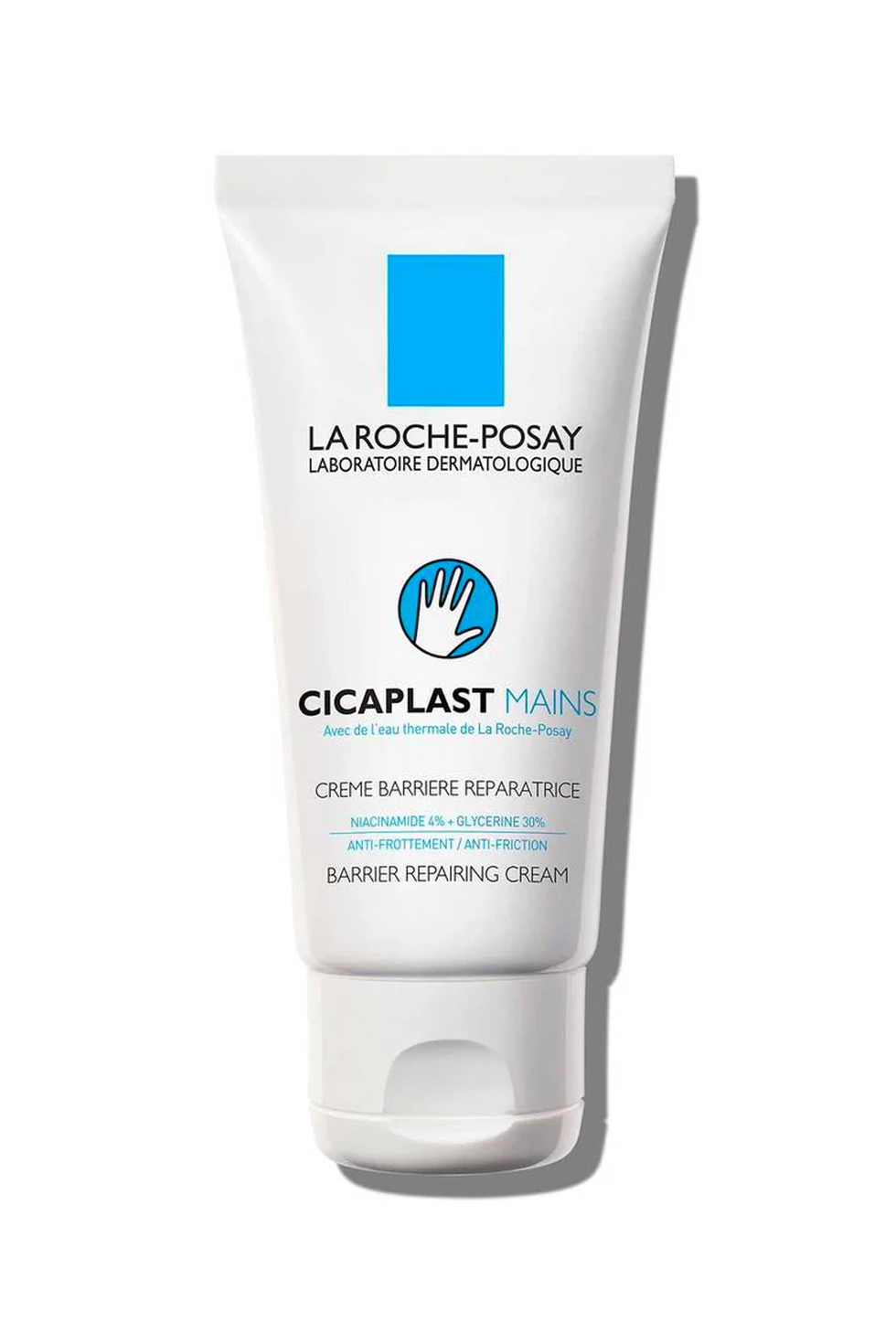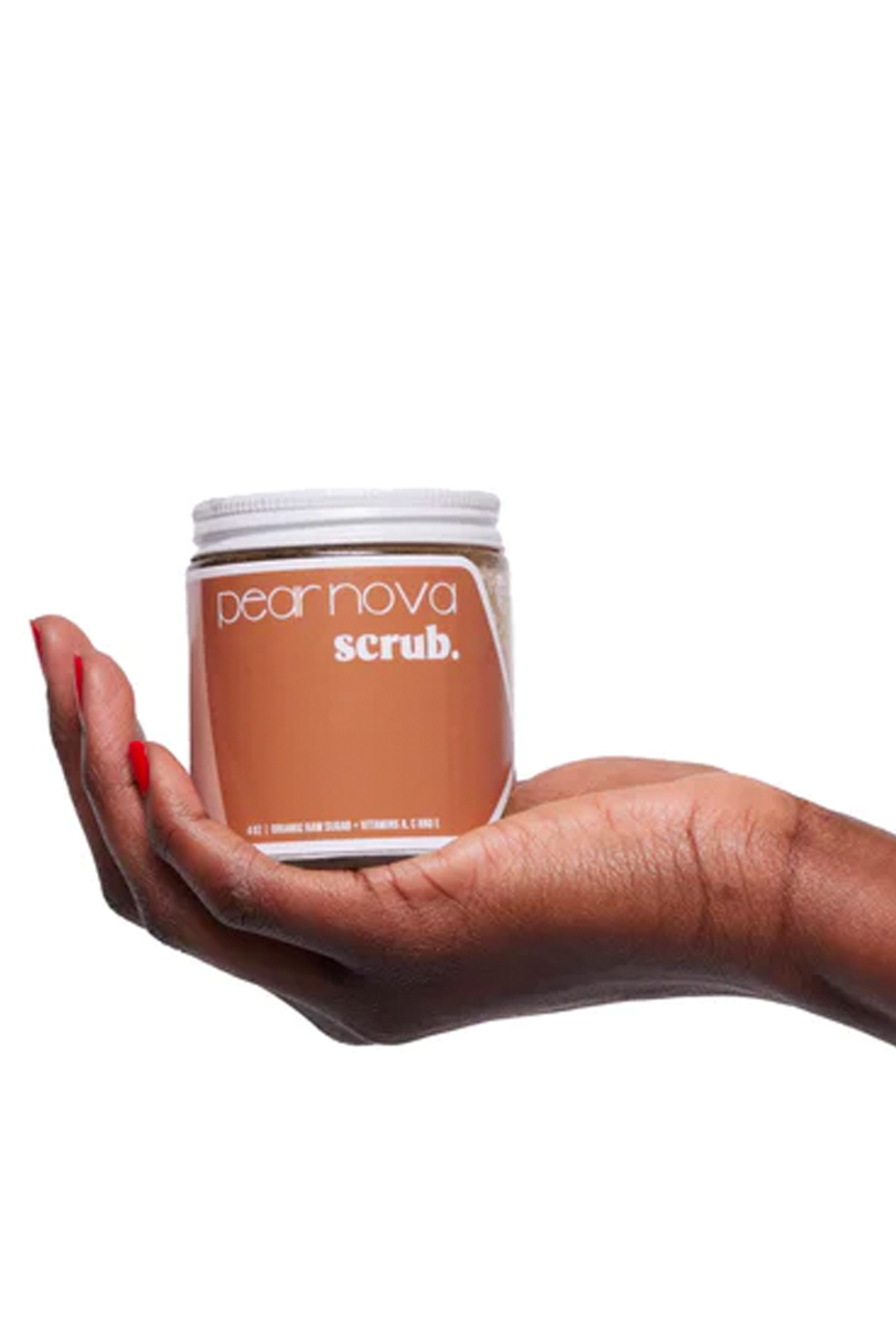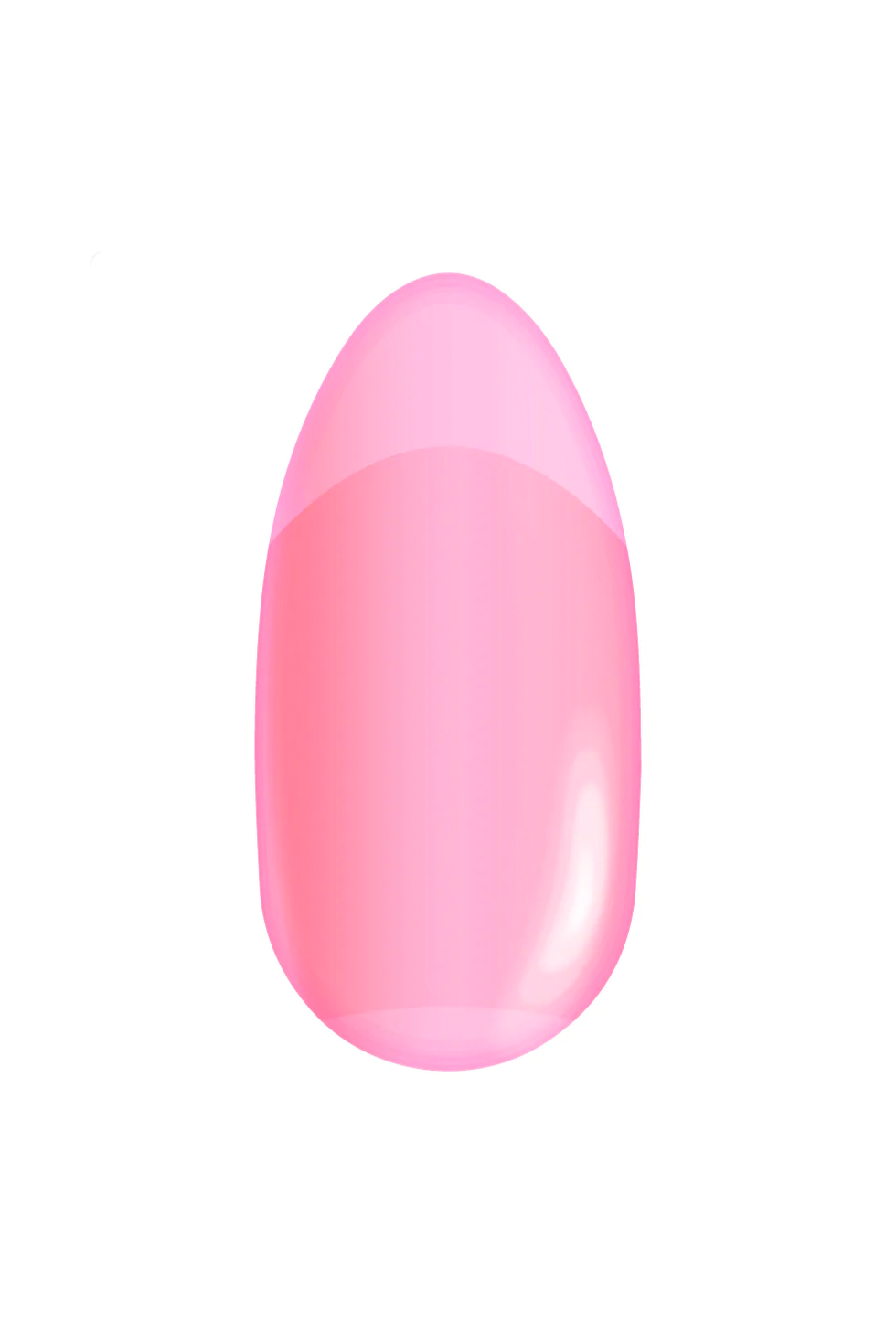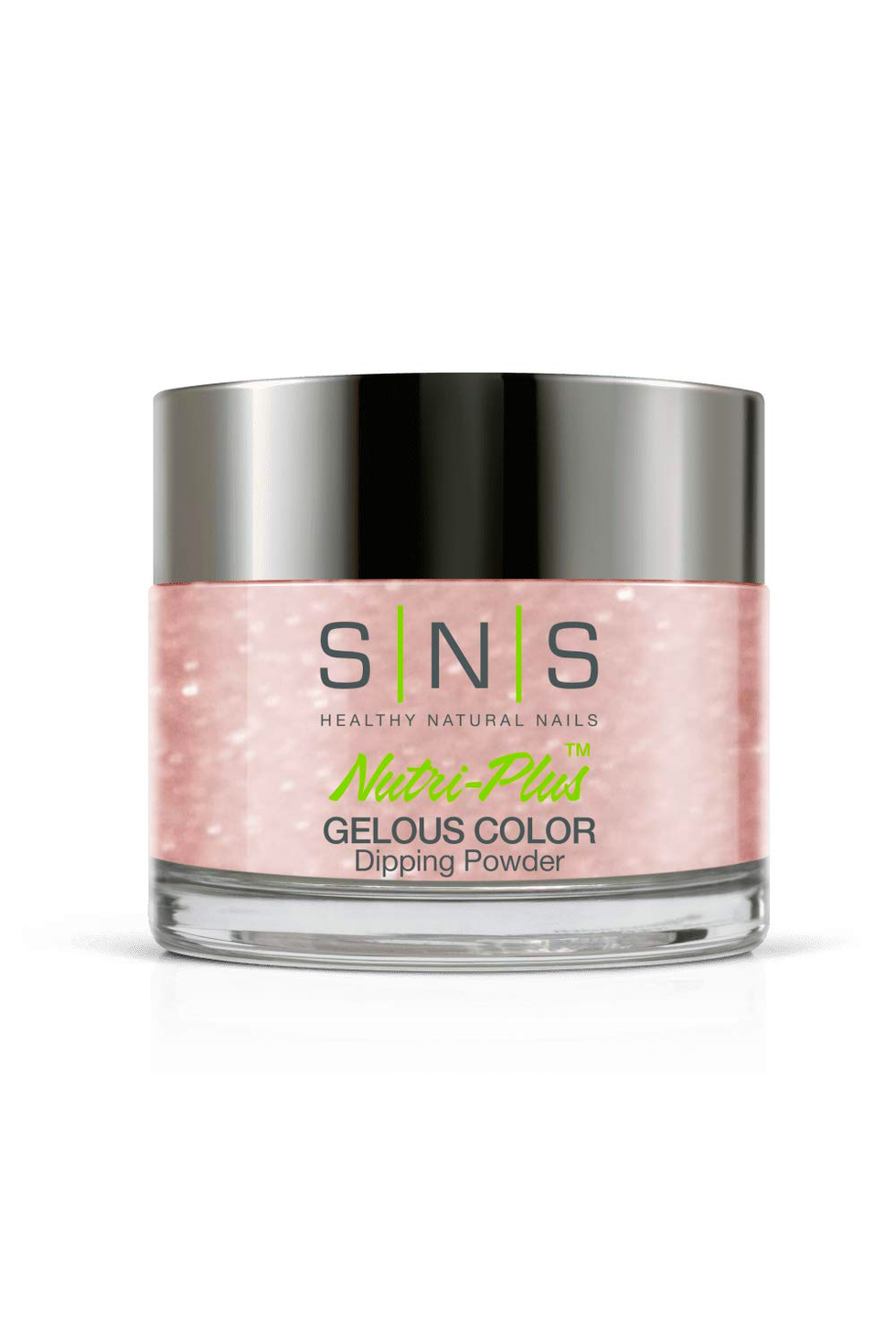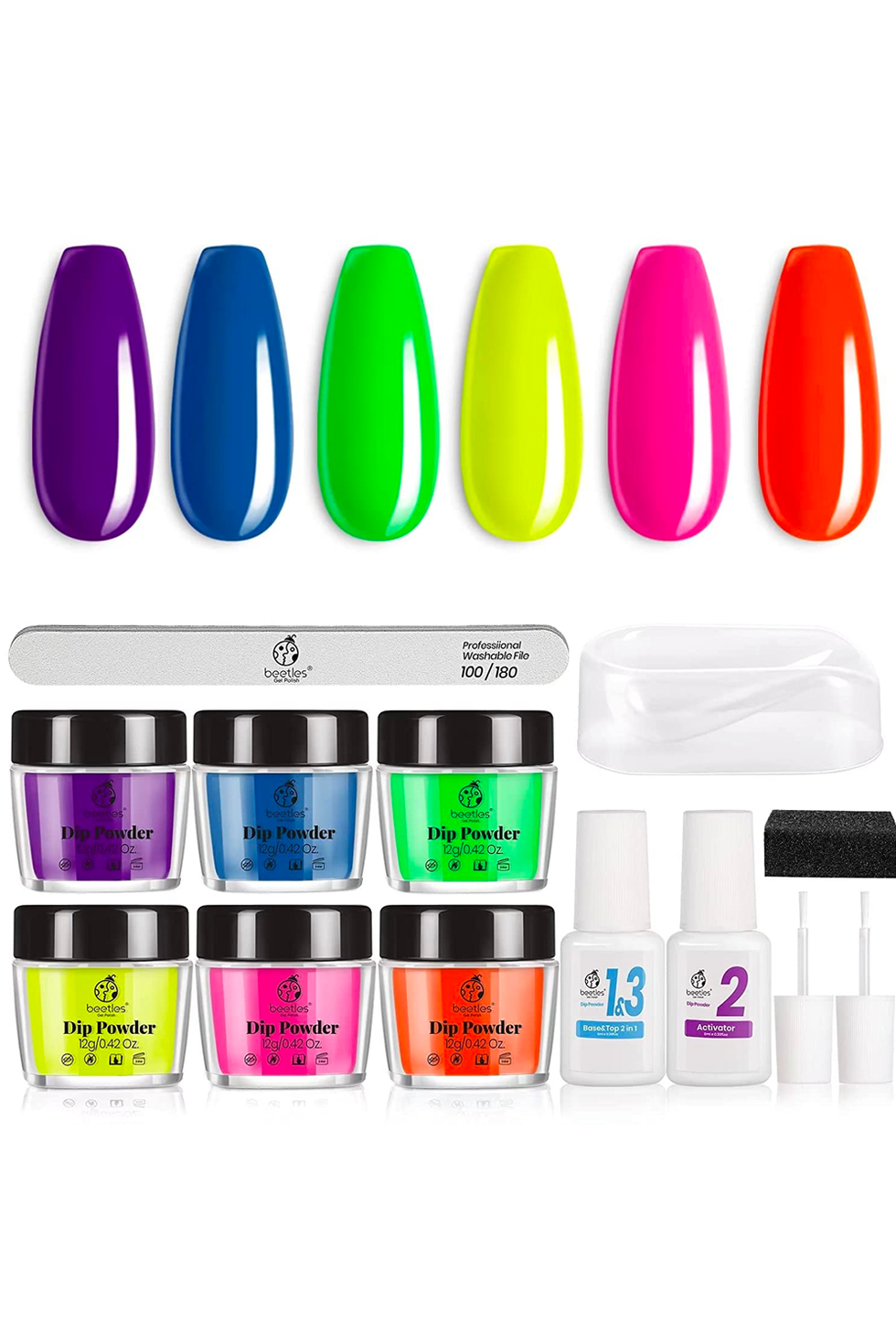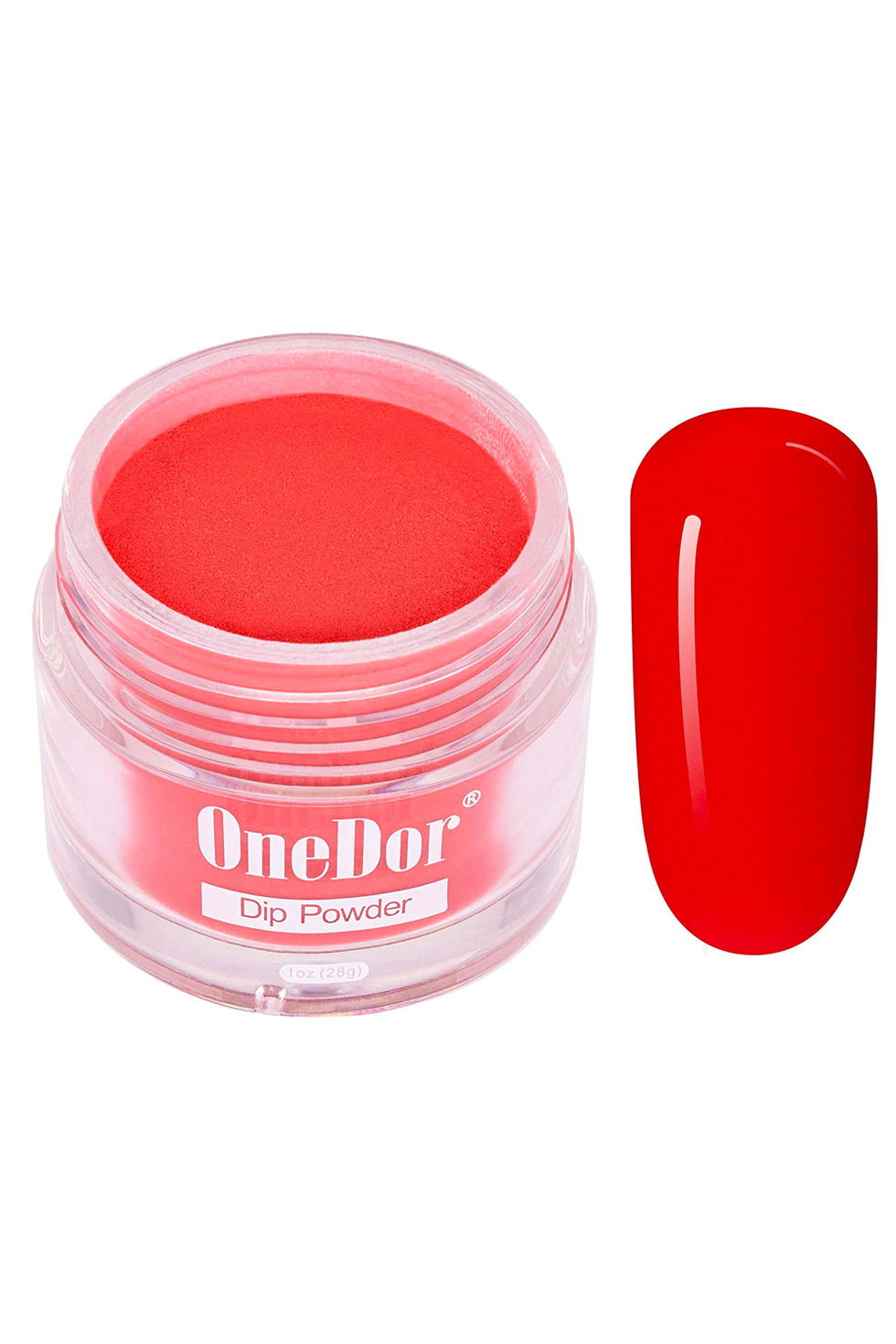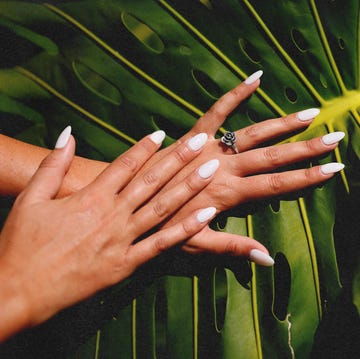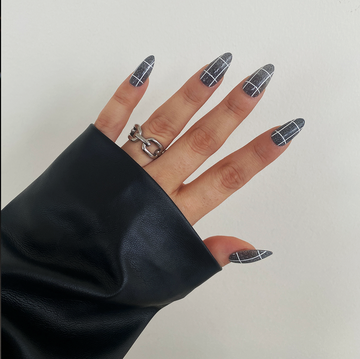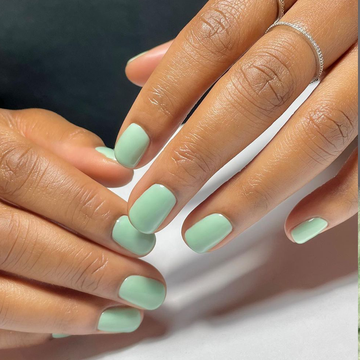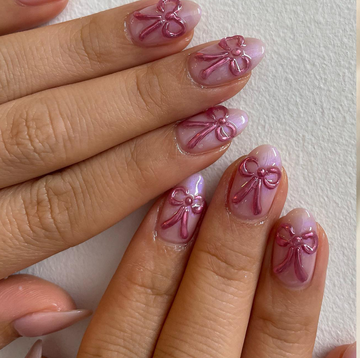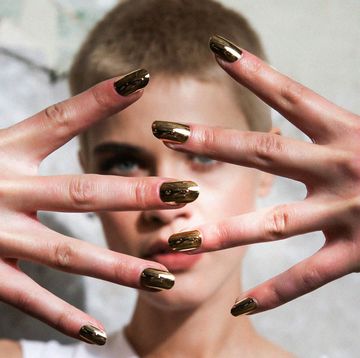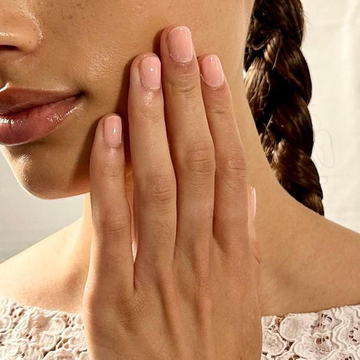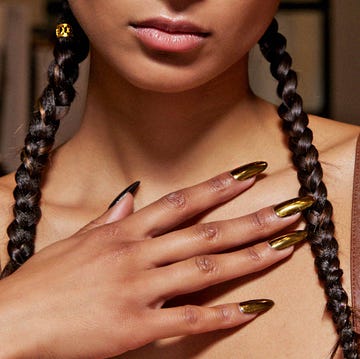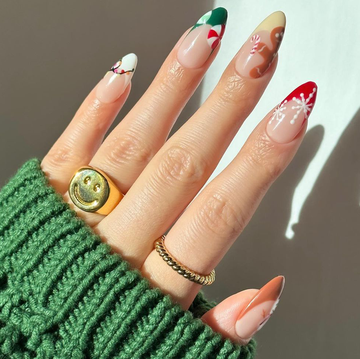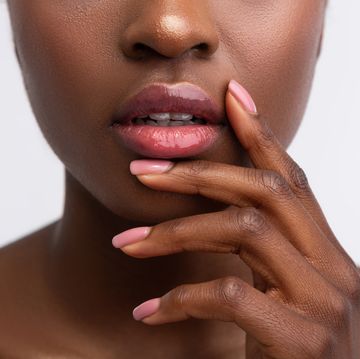After endlessly complaining to my best friend about my stubby, nail glue-encrusted fingers (tysm, press-on nails), she begged me to try dip powder nails—i.e., the nail technique virtually everyone I know has been trying. Dip nails (sometimes referred to as SNS powder nails) require painting your nails with a base coat and then dipping—shocker!—your nails into a pigmented powder that acts as the paint. Not only are they more durable than gel nails, but dip nails actually last longer than gel manicures too. So, unsurprisingly, I decided to try them out.
Cut to three months later, and after testing out a few dip manicures of my own, I’m officially a convert. So if you’re also interested in trying out the dip powder trend (or your BFF is also pressuring you to make the switch), keep reading, because I got all the details from a nail artist and dermatologist on what makes dip different from gel, and if dip powder is even good for your nails.
What are dip powder nails?
Dip powder nails is a technique in which you or a nail technician dusts or brushs a pigmented powder over your nails to create an opaque layer of color. It got its name because when you’re DIYing it at home, you can literally “dip” your nail into the jar of powder (more on the specifics below). Dip powder nails typically require a few coats of powder for opacity before you paint a liquid sealant painted on top to harden the powder. Finally, they're sealed with a top coat for shine. The result? A manicure that can last around three weeks without chipping or lifting.
How do you do dip powder nails?
The exact technique for doing dip powder nails will vary from salon to salon, and even from kit to kit (if you’re going the hands-on route with an at-home dip powder kit). Still, to get a feel for how dip nails work, check out this pared-down, very-basic, five-step process you might see in the salon from nail artist Syreeta Aaron.
1. Your technician will first clean and file your nails, making sure any excess oils and/or polish are completely removed.
2. They’ll then prep your nails with a bond liquid (sometimes called a dip base coat) that adheres the powder to your nails.
3. The nail tech will then coat your nails, one by one, in the colored powder of your choice by dusting or brushing the powder over your nail, then repeat the process one to two more times for opacity. Some artists (including Aaron and my own nail tech) will also add a coat of clear powder on top as a protective buffer, so when you file and shape your nails afterward, you won’t file away the actual color powder.
4. After the powder is added, your tech will buff the top layer of powder to eliminate any lumps, then paint on a liquid sealant to harden and adhere the dip powder to your nails.
5. Once your nails dry, usually two to three minutes, your tech will layer on a liquid top coat to give your nails a glossy finish, which can take up to 10 minutes to dry. Some techs can also cure your nails with a gel top coat and LED nail lamp to dry them immediately.
Is dip powder good for your nails?
Dip powder isn’t necessarily “good” for your nails (because no nail technique—other than having bare nails—truly is), but they shouldn't create any long-term damage either, so long as your technician is taking safety measures into account (more on this below...).
Is dip powder safe for nails?
Dip powder is safe for your nails, so long as your artist is following the important safety protocols. The most important: Making sure your artist dusts the powder over your nail, rather than having you dip your nail directly into the powder jar. Yeah, it's counterintuitive to the name, but unless it's a single-use pot or you're DIYing your nails at home, you'll be at risk of bacterial contamination from other fingers and hands, says board-certified dermatologist Mona Gohara, MD.
So before making an appointment, call ahead and ask how the salon does their dip nails. Do they dip directly into a pot, or do they brush the powder on with a clean brush? How do they limit powder contamination? If the salon can't answer your questions, bid them adieu and research other salons.
How long do dip powder nails last?
On average, you can expect your dip powder nails to last up to three weeks before noticing chips, flakes, or lifting, says Aaron. For reference, mine lasted three-and-a-half weeks before cracking and lifting around the edges. Just remember: Your nails grow an average of .03 inches per week, so because of your natural nail regrowth, even the best dip nails can't last forever.
QQ: Does dip powder last longer than gel?
Dip powder can potentially last longer than gel nails, but it all depends on what products you're using. Gel nails, for reference, usually last two weeks without chipping, whereas dip can go as long as three weeks for some people. But this is totally dependent on you (for example, I am furiously typing at my desk daily, leading to more chipping than, say, someone who doesn't ~work with their hands~). Plus, it's important to remember that even if your dip powder nails don't chip or lift at the edges for three weeks, they likely will have quite a bit of regrowth after that much time.
What are the pros and cons of dip nails?
As with any nail treatment, there are both pros and cons for dip nails that’ll help you decide if the technique is worth it for your specific ~goals~. Here’s a quick rundown:
Dip-nail pros:
- Usually lasts longer than nail polish or gel manicures (think: three weeks vs one to two weeks)
- Dries in a few minutes
- No UV lights required to dry, as with gel (but can be layered with a gel top coat and cured under a UV lamp to dry in seconds)
- Can be done at home with a few supplies
- Lots of color options
Dip-nail cons:
- Cost more money than regular manicures and gel, generally
- Feels slightly thick on your nails, which some might not love
- Can potentially stain and weaken your nails (as can gel and acrylic nails)
- Requires soaking and scraping to remove, which can be drying for your fingers and nails (but not necessarily any more damaging than gel-nail removal)
- Need to make sure you're going to safe, hygienic salon
Are dip nails better than gel?
Dip nails aren’t “better” than gel; they both just come down to personal preference. Obviously, the biggest difference between both is their application method: Gel requires you to place your painted nails under a UV light to set, while dip involves dusting powder over your nails and brushing on an activator to harden. So if you’re concerned about consistent exposure to UV light and potential skin damage, then you might prefer dip powder as an alternative.
Another difference is in their longevity. “Most of my clients will choose dip over gel because dip nails are more durable than gel polish, meaning they’re less likely to chip and break,” says Aaron. Think: Two to three weeks for dip, versus two weeks for gel. The durability of dip powder also makes it a better option for someone trying to grow out their natural nails, because the layer of powder is so thick that it protects your nails from breaking and splitting. FWIW, my nails grew so much longer with dip than they ever had with gel.
That being said, gel manicures do have an edge over dip in one area: cost. Dip powder tends to be more expensive than a classic gel manicure, especially if you’re DIYing them at home, so again—it all comes down to preference.
Can you do dip powder nails at home?
Yup, you totally can do dip powder nails at home. Just keep in mind that at-home dip powder kits require some serious patience and time (just scope the tutorial above for proof). So if you’re a little hesitant, go to a salon for your first dip powder manicure, so you can get a feel for the process and end result before you try to DIY It.
How do dip nails come off?
Dip nails come off a bit easier than gel nails (far less scraping is involved), but they’re still tedious. Dip-nail removal typically involves soaking your nails in an acetone solution until the powder dissolves (about 10 to 15 minutes). If you’re removing dip nails at home, file off the top shiny coat, place an acetone-soaked cotton ball on each nail, then wrap them with aluminum foil for 10 to 15 minutes.
What to do after removing dip nails?
After you remove your dip nails, you should moisturize your nails and hands. Why? Because dip-nail removal—whether you got your mani professionally or at home—can leave your nails and hands feeling super dry from all the acetone. Load up on cuticle oil, hand cream, and nail strengtheners once or twice a day for about a week to moisturize your nails and skin.
How often should you take a break from dip nails?
You should give your nails a break from dip powder at least once a month, says Dr. Gohara, because getting thick manicures (that also require drying acetone to remove) on a regular basis can make your nails weaker over time. If you start to notice signs of major brittleness (i.e., splitting, cracking, peeling), remove your dip powder manicure asap and leave your nails bare for two weeks. And, if you’re really concerned about your nails feeling weak, talk with your dermatologist about a prescription nail-strengthening treatment, says Dr. Gohara.
QQ: Can you do a design on dip nails?
Yep, you can do designs on dip nails “after the powder is placed on and fully set with the sealant liquid,” says Aaron. You’ll create the base shade(s) for the design with dip powder, then paint your design with either acrylic paint, regular polish, or gel polish (depending on your nail artist, the design, and whether or not you mind UV lights).
Can dip nails be filled?
Yes, you can fill in dip nails when your natural nails have grown out. When you get a dip-powder fill, your nail tech will “file the dip fairly thin, especially paying attention to blend around your cuticle to make sure there’s no hump on your nail when you add the new layer of powder,” says Aaron. Then, they’ll paint over it with a base coat before adding the pigment.
Just know that some artists, like Aaron, don’t really recommend filling dip powder nails. Why? Because layering dip over your nails too many times can lead to cracking, splitting, peeling, and chipping. Which is why you’ll want to make sure to get a full removal and let your nails breathe for a few days once or twice a month, says Dr. Gohara.
How much do dip nails cost?
You can expect your appointment to cost a little bit more than a gel manicure, ranging from $30 to $60 depending on your salon. At-home dip powder kits also range in price point—you can find basic options for about $20, while bigger kits with more color variations can come in at around $60. It really depends on what you're looking for.
QQ: Do dip nails have to be so thick?
One of the biggest cons of dip nails is that they have a bulkier look than gel or regular manicures, since multiple layers of powder are added to your nails. But a skilled nail tech can file them down (especially underneath your nails) to reduce the thickness and make them feel a bit more natural. If you're concerned about this, or previously had a set you didn't love, tell your nail artist that you prefer a thinner look and feel.
Final thoughts:
If you prefer a long-lasting manicure that’s quicker to remove than gel nail polish, you might love dip-powder nails. The removal process is also generally simpler than gel, and the application is pretty cool, but don’t be fooled: It has the same potential to weaken your nails over time. So make sure you have a kit stocked with cuticle oil and moisturizing hand cream once you get the powder removed.
Personally, I can see myself opting for dip powder when I’m trying to grow my natural nails out (because the thick layer of powder makes them less susceptible to breaking), or if I need a manicure that will last several weeks and won’t show the usual wear-and-tear of my gel polish—because lemme tell you, dip powder is durable as hell. Catch me getting dip nails if hell ever freezes over and I somehow end up on a hiking trip, because that mani will. not. budge.
Meet the experts:
- Mona Gohara, MD, is a board-certified dermatologist in Hamden, CT. Dr. Gohara is an associate clinical professor at Yale School of Medicine and president of the Women’s Dermatologic Society. Her areas of expertise include medical and surgical dermatology and treating skin of color.
- Syreeta Aaron is a nail artist and founder of House of Nails in Montgomery, AL. She’s also an educator for LeChat Nails, a gel and dip powder nail line for professionals and DIYers.
Why trust Cosmopolitan?
Beth Gillette is the beauty editor at Cosmopolitan with six years of experience researching, writing, and editing nail stories that range from manicure sets to the 2023 nail trends. She’s an authority in all nail categories but is an expert when it comes to dip powder nails after testing them on her own nails and interviewing dermatologists and nail artists.
Ruby Buddemeyer was the beauty editor at Cosmopolitan for nearly three years, and has five years of experience writing about beauty, fashion, and celebrity news across print and digital, including summer nail designs and nail polish gift sets. She compiled this story after interviewing the industry’s top experts on dip powder nails.
Beth Gillette is the beauty editor at Cosmopolitan, where she covers skincare, makeup, hair, nails, and more across digital and print. She can generally be found in bright eyeshadow furiously typing her latest feature or hemming and hawing about a new product you "have to try." Prior to Cosmopolitan, she wrote and edited beauty content as an Editor at The Everygirl for four years. Follow her on Instagram for makeup selfies and a new hair 'do every few months.
Ruby was the beauty editor at Cosmopolitan, where she covered beauty across print and digital. Her work has appeared on The Zoe Report, Fashionista, and StyleCaster. Follow her on Instagram.
